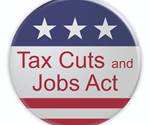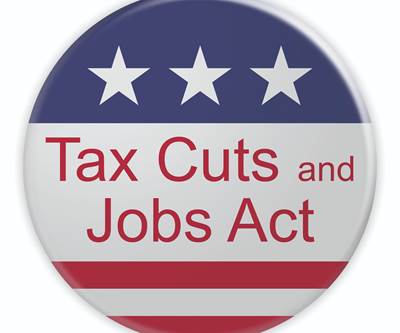Tax Reform: Changing the Rules of Business Losses
The Tax Cuts and Jobs Act has changed the way many mold builders account for their business losses. The new rules impact the tax treatment for business losses regardless of a company’s structure.
The Tax Cuts and Jobs Act has changed the way many mold builders account for their business losses. The new rules impact the tax treatment for business losses regardless of a company’s structure (C corporation, S corporation, LLC or partnership).
For example, the Act limits the net operating loss (NOL) deduction to 80 percent of the taxable income of the year in which the shop carries the loss, for losses occurring in tax years beginning after December 31, 2017. Also, the NOL carryback provisions were eliminated for tax years ending after December 31, 2017. However, these provisions do allow for losses to be carried forward indefinitely (a change from the previous 20-year limit).
In the Fall of 2018, then-Chairman of the Ways and Means Committee Kevin Brady indicated that there are approximately 70-80 technical corrections Congress must address to make minor clarifications to the Act. One of these clarifications involves the timing of the rule changes related to net operating losses. The issue is the effective date of the repeal of the ability to carryback net operating losses two years. While the statutory language states that the carryback provision is repealed for losses arising in tax years ending after December 31, 2017, the Congressional conference committee reports provide an effective date for tax years beginning after December 31, 2017.
The American Institute of Certified Public Accounts (AICPA) listed the effective date of the net operating loss changes as a necessary technical correction. The AICPA recommends that the limitation disallowing the carryback of net operating losses be effective for tax years beginning after December 31, 2017, as this language would be fairer to fiscal year taxpayers.
The Act also introduced a new limitation on excess business losses for flow-through companies (S corporations, partnerships, and LLCs). Generally, flow-through entities do not pay federal income tax. Instead, the owners of these entities pay federal income tax on their share of profits and losses.
Owners of flow-through entities are limited in their ability to use losses from flow-through entities to offset other income.
Owners of flow-through entities are limited in their ability to use losses from flow-through entities to offset other income. Before the Act, owners of flow-through entities had to overcome three hurdles to use losses generated by the flow-through business:
- Owners must have a sufficient basis (stock basis and debt basis) to deduct losses generated by a flow-through entity.
- The owner of the business must be at-risk to use losses generated in a given tax year.
- Losses from flow-through entities in which the owner has an interest, but does not materially participate, may only offset income from other passive activities or companies. Material participation is when an owner is involved in the operations on a regular, continuous, and substantial basis.
The Act now has a fourth limitation for owners of flow-through entities that generate a loss. For tax years beginning after December 31, 2017, and before January 1, 2026, the Act provides for the disallowance of a noncorporate taxpayer’s excess business losses, even if the owner has sufficient basis, is at risk for the loss, and materially participates in the business. Instead, these losses are carried forward indefinitely and treated as part of the taxpayer’s net operating loss.
The Act defines excess business losses as the excess of the aggregate deductions attributable to the taxpayer’s trades or businesses, over the sum of the aggregate gross income and gain of the taxpayer, plus a threshold amount. For married taxpayers filing a joint return, the threshold amount is $500,000. For other individuals, the threshold amount is $250,000. Both threshold amounts are indexed for inflation.
For owners of S corporations and partnerships, each shareholder’s or partner’s proportionate share of income, gain, deduction or loss is taken into account. For example, let’s assume Christina and her husband own 100 percent of three S corporations: Company A, Company B, and Company C. In 2018, Company A incurs a $300,000 loss, Company B incurs a $400,000 loss, and Company C has $100,000 of profit. Christina materially participates in all three businesses, has sufficient stock basis and is at risk for the losses incurred by Companies A and B. She files a joint tax return with her husband, who receives over $1,000,000 in compensation from his employer. In aggregating the flow-through income from Christina’s companies, her CPA determines that she would be able to use a $600,000 loss against her husband’s income, minus the new excess loss limitation ($300,000 + $400,000 - $100,000). However, because of the new excess loss limitation’s rules, Christina and her husband will only be able to deduct $500,000 of the loss against other income. The remaining loss of $100,000 will be treated as an NOL and carried forward to future years.
These new limitations on the ability to use NOLs or excess business losses could significantly impact a mold builder’s ability to use those losses to offset other income. Mold builders who incur losses must plan properly to ensure the greatest and most appropriate amount of loss is used to offset other income.
For More Information
Mueller Prost / 314-862-2070 / mdevereux@muellerprost.com / muellerprost.com
About the Contributor
Michael J. Devereux II, CPA, CMP is a partner and director of manufacturing, distribution and plastics industry services at Mueller Prost.
Related Content
How to Improve Your Current Efficiency Rate
An alternative approach to taking on more EDM-intensive work when technology and personnel investment is not an option.
Read MoreLeading Mold Manufacturers Share Best Practices for Improving Efficiency
Precise Tooling Solutions, X-Cell Tool and Mold, M&M Tool and Mold, Ameritech Die & Mold, and Cavalier Tool & Manufacturing, sit down for a fast-paced Q&A focused on strategies for improving efficiencies across their operations.
Read MorePredictive Manufacturing Moves Mold Builder into Advanced Medical Component Manufacturing
From a hot rod hobby, medical molds and shop performance to technology extremes, key relationships and a growth strategy, it’s obvious details matter at Eden Tool.
Read MoreTop 10 Topics to Cover During an ISO 9001 Manufacturing Audit
Take a look at this practical hands-on approach to conducting a quality audit.
Read MoreRead Next
Tax Reform Limits and Eliminates Popular Deductions
The Tax Cuts and Jobs Act of 2017 made several changes to the manner in which mold shop determine taxable income.
Read MoreHow Tax Reform Impacts the Accounting Methods of Mold Shops
The Tax Cuts and Jobs Act of 2017 code may broaden the accounting methods available to mold builders with average annual gross receipts of less than $25 million for the prior three tax years.
Read MoreHow to Use Continuing Education to Remain Competitive in Moldmaking
Continued training helps moldmakers make tooling decisions and properly use the latest cutting tool to efficiently machine high-quality molds.
Read More













.jpg;maxWidth=300;quality=90)







